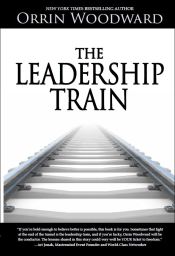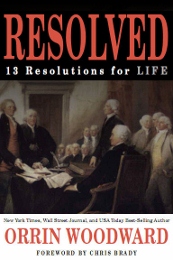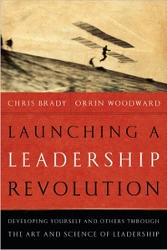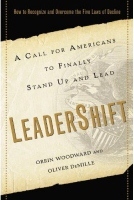The Power of True Friendship – Lewis & Tolkien
Posted by Orrin Woodward on February 9, 2011
C.S. Lewis and J.R.R. Tolkien, both Oxford professors, members of the Inklings club, and two of the best selling authors of all time, are a powerful example of the impact friends can have upon one another. The encouragement and belief, that each had for the other, at a time when both were little known professors, led to one of the most fruitful friendships of all time. In fact, in a recent survey of the top five selling books of all time, Tolkien’s Lord of the Rings series was number four, and right behind it, was Lewis’s Chronicles of Narnia set, an impressive accomplishment for two best friends in the Oxford literature department. The total sales for the Lord of the Ring series currently stands at over 200 million books sold, while the movie trilogy has surpassed box office revenues of over $3 billion. Lewis’s Narnia series, weighs in at over 150 million books sold along with just under $2 billion in movie sales, with several more movies in the the series still to be produced . When the staggering totals are added together, it brings the grand total from these two creative geniuses, to over 350 million books sold and nearly $5 billion in sales. Pretty impressive numbers for two professor in Oxford, who on a whim formed the Inklings, the informal club that inspired each of them through the encouragement and feedback received. Warren Lewis, C.S.’s brother and a member of the club, said, “Properly speaking, the Inklings was neither a club nor a literary society, though it partook of the nature of both. There were no rules, officers, agendas, or formal elections.” Although informal, the members, typically ten or less, perfected their craft by reading to one another their latest works. Both Lewis and Tolkien relished the time invested in each other, meeting twice a week for the club, and Tolkien visiting Lewis a third day of the week for one on one discussions. It’s hard to fathom a more productive friendship. That two of the top five selling books of all-time, were birthed from a friendship begun in 1926, nurtured through association at the Inkling’s club, and fueled by constant encouragement and belief in another, displays the amazing power inherent in a synergistic friendship.
Christian History managing editor Chris Armstrong interviewed Colin Duriez, the author of Tolkien and C.S. Lewis: The Gift of Friendship, a fascinating read on their relationship. Armstrong was seeking the keys to the powerful influence that each had with the other, he asked Duriez, “You have said that if it hadn’t been for the friendship between Tolkien and Lewis, the world would likely never have seen The Narnia Chronicles, The Lord of the Rings, and much else. What was it about “fairy stories” that led these two men to want to rehabilitate them for a modern audience—adults as well as children?” Duriez answered, “They had both personal and professional reasons for this interest. Personally, they had both read and enjoyed such stories as they were growing up, in collections by the brothers Grimm, Andrew Lang, and others. Lewis had also heard Celtic myths—his nurse had told him some of the folk tales of Ireland. Professionally, they studied and taught the literatures of medieval romance and, in Tolkien’s case, the background of Norse myth. And they realized that it was only quite recently that such stories had become marginalized as “children’s stories.” Through much of history these were tales told and enjoyed by grown-ups. Even strong warriors enjoyed them, rejoicing in their triumphant moments, weeping at tragic turns of events. These stories told them important things about life—about who they were and what the world was like, and about the realm of the divine. It dawned on both men that there was a need to create a readership again for these books—especially an adult readership.” Two men, in academic positions, with no financial backing or worldwide connections, but with an insatiable desire to balance reason and imagination through the power of myth within culture, started a revolution. Both authors were greatly concerned with the rampant materialism of the modern age, believing it divided the mind humanity by separating man’s reason from his imagination. Most professors, when confronted with this dilemma, would have expressed their concerns, folded their hands, doing nothing, but Tolkien and Lewis were not like most professors.
Duriez’s in his book, Tolkien and C. S. Lewis: The Gift of Friendship, recreated a dramatic scene, an discussion between Tolkien and Lewis, then two barely published authors, where the quest re-introduce imagination through fantasy and myth was born. The two dreamers discussed the dearth of good fiction that captures the spirit of recovery and escape through the power of myth. After reviewing various authors and their works, Tolkien and Lewis develop a plan, a plan so audacious, it’s barely conceivable with the amount of time and effort that it would take, but the professors, not afraid of hard work, agreed to write fiction with a purpose, leading people to truth through the power of myth, aligning reason with imagination for the modern world. Duriez writes, “‘You know, Tollers,” Lewis says decisively, pipe in hand. “I’m afraid we’ll have to write them ourselves. We need stories like your Hobbit book, but on the more heroic scale of your older tales of Gondolin and Goblin wars. One of us should write a tale of time travel and the other should do space travel.’ Tolkien reminds his friend of a rather similar challenge well over a century ago—Lord Byron, at Lake Geneva in 1816, had challenged Percy Shelley and Mary Shelley to write a ghost story … and Mary, a mere girl at the time, went on to write Frankenstein. They needed, Tolkien continues, his eyes brightening, stories today that expose modern magic—the tyranny of the machine. ‘Let’s toss for it, Tollers. Heads, you write about time travel; tails, you try space travel. I’ll do the other.’ Tolkien nods his agreement, grinning. Lewis fishes in the pocket of his crumpled and baggy flannels and a coin spins in the air. ‘Heads it is.’ Lewis wrote many books besides Narnia, while Tolkien focused mainly on his Lord of the Rings classic, but in the end, both authors achieved fame through their fantasy fiction series of Narnia and Lord of the Rings. The unknown authors of 1936, accomplished what they set out to do, creating fiction that captures profound realities of life that are impossible to capture in any other way. In other words, good fiction reveals truths of life that real life cannot comprehend. The audacity of these two friends when they began this assignment was only surpassed by their inexperience. History, it seems, displays that many great achievements are many times birthed by the optimistic amateurs rather than the pessimistic experts.
But the story of Tolkien and Lewis begins earlier, well before their life purpose filled discussions of 1936. Back in 1931, on the nights of September 19th and 20th, Tolkien, Lewis, and Hugo Dyson walked down Addison’s Walk, on the grounds of Magdalen College, where Lewis surrendered his materialistic world-view for a Christian world-view and a personal relationship with Jesus Christ. Both Tolkien and Dyson were Christians, repeatedly pointing out the untenable position that Lewis had place himself in by separating reason from imagination in his materialistic position. Author Ethan Gilsdorf shares his thoughts on the three friends discussion, writing, “”Myths are lies,” Lewis had said that night. “Myths are not lies,” Tolkien countered, among the swaying trees of Magdalen Grove. Materialistic progress leads only to the abyss, Tolkien said, but the myths we tell reflect a fragment of the true light. He argued the Christ story functions as a myth, just like the Scandinavian myths they had loved, with one difference: The Christian myth was true. As the night wore on, Lewis began to see the hopeless divide in his materialistic mindset, leading to his conversion. Duriez writes of the conversations on Addison’s Walk from Tolkien’s poem Mythopoeia (the making of myth), “Tolkien wrote of the human heart not being composed of falsehood, but having nourishment of knowledge from the Wise One, and still remembering Him. Though the estrangement is ancient, human being are neither completely abandoned by God nor totally corrupted. Though we are disgraced we still retain vestiges of our mandate to rule. We continue to create according to the ‘law in which we were made.’” Lewis in his book Miracles, captures the essence of the conversations between Tolkien, Dyson and himself, “The heart of Christianity is a myth which is also a fact. The old myth of a Dying God, without ceasing to be myth, comes down from the heaven of legend and imagination to the earth of history. It happens – at at a particular date, in a particular place, followed by definable historical consequences. We pass from a Balder or an Osiris, dying nobody knows when or where, to a historical Person crucified (it is all in order) under Pontius Pilate. By becoming fact it does not cease to be myth: that is miracle. To be truly Christian we must both assent to the historical fact and also receive the myth (fact though it has become) with the same imaginative embrace which we accord to all myths.” Lewis describes God as the storyteller who enters His own story, completing the work of redemption according to His plan, making all other stories and myths pale in comparison, since His story is myth made real in history by the birth of Christ. Lewis discovered, for himself, the real reason why fantasy and myths move people, because they provide a foretaste of the greatest story, the true redemptive story, in the birth, the life, the death, and the resurrection of Jesus Christ.
The remaining portion of this article can be found on the password side of the TEAM website. God Bless, Orrin Woodward
Sorry, the comment form is closed at this time.







